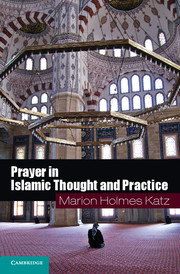Conclusion
Published online by Cambridge University Press: 05 April 2013
Summary
In his religio-political memoir The Islamist, the British Muslim Ed Husain recounts his youthful journey from the Sufi piety of his South Asian family, through his deepening involvement in Islamic political activism as a university student, and finally back to Sufism as an adult. At each turning point in Husain’s account of his religious trajectory, it is the practice of prayer – the specific style of its performance, the nature of the knowledge that is mobilized to authenticate it, and its affective and spiritual qualities – that most centrally characterizes his evolving identity as a Muslim. His “first act of rebellion” is to pray with his head uncovered, emulating slightly older activists whom he assumes to be “well versed in their religion.” This act of religious self-assertion marks a break with the authority of his family; “I prayed that evening with confidence, with a feeling of difference, of greater ease.” Later he becomes involved with an Islamist group that “prayed in a way I had not seen in any of Britain’s mosques, standing in perfectly straight rows, touching ankles, constantly checking to see that their feet were touching one another, and holding their arms in a martial position on their chests.” For Husain, their posture in congregational prayer is simultaneously a potent marker of difference, a performative indicator of the militance of their political stance, and a claim to religious knowledge and authority. (He writes that “they flooded the college with books explaining how they prayed and giving ‘evidence’ and ‘references’ in support.”) Husain attributes his ultimate disillusionment with his Islamist comrades in part to their deficient knowledge of (and devotion to) prayer, writing that even as they called others to Islam, many did not know how to pray properly or neglected prayer in favor of political activism. His culminating return to Sufism is also authenticated by the depth and authenticity of his ṣalāt: “Now, to bow and prostrate myself in prayer had meaning for me: abject humility, total lack of vanity in following the Prophet Mohammed’s motions of prayer before the unseen but all-seeing God. . . . Suddenly there was sweetness to prayers, nourishment for the soul, where previously they had been a dull chore.”
- Type
- Chapter
- Information
- Prayer in Islamic Thought and Practice , pp. 215 - 216Publisher: Cambridge University PressPrint publication year: 2013



